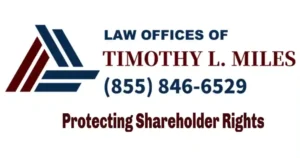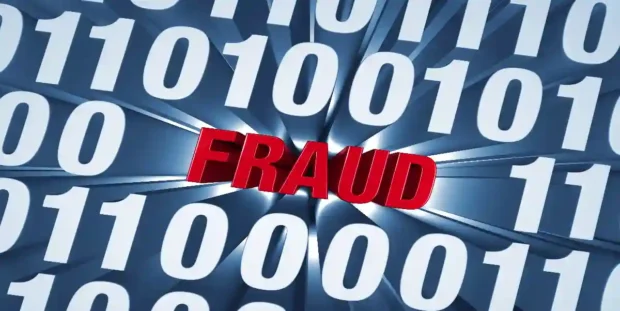Introduction to the Vestis Class Action Lawsuit
If you suffered substantial losses and wish to serve as lead plaintiff of the Vestis class action lawsuit, or just have general questions about you rights as a shareholder, please contact attorney Timothy L. Miles of the Law Offices of Timothy L. Miles, at no cost, by calling 855/846-6529 or via e-mail at tmiles@timmileslaw.com. Lead plaintiff motions for the Vestis class action lawsuit must be filed with the court no later than August 8, 2025.
In this comprehensive guide, you will learn everything an investor in the Vestis lawsuit.
Securities Fraud Class Action Lawsuits
A securities fraud class action lawsuit is a legal mechanism through which investors who have suffered financial losses due to fraudulent activities or misleading statements by a company can collectively seek redress. Such lawsuits generally occur when a company, its executives, or other insiders misrepresent or omit crucial information that impacts the company’s stock price, thereby causing investors to make decisions based on faulty or incomplete data.
These lawsuits are essential in maintaining market integrity, ensuring that companies adhere to transparent and honest communication with their shareholders.

One notable example is the Vestis lawsuit. Investors in MicroStrategy Inc. allege that the company and its executives engaged in securities fraud by making false or misleading statements regarding the company’s financial health and business prospects. As a result, when the truth was revealed, the stock price plummeted, leading to significant financial losses for shareholders.
In a class action lawsuit like the Vestis class action lawsuit, individual investors combine their claims into a single suit, which increases their leverage against the corporation and makes it more feasible to pursue justice. These lawsuits follow a rigorous legal process, requiring certification from the court that the group of plaintiffs (the “class”) shares common legal or factual claims.
If successful, a securities fraud class action lawsuit can result in substantial financial settlements or judgments against the defendant company, thereby compensating the affected investors and holding the wrongdoers accountable.
In conclusion, securities fraud class action lawsuits are crucial tools for protecting investors and maintaining trust in the financial markets. They offer a way for individuals who might not have the resources to sue independently to band together and challenge corporate misconduct effectively.
The Private Securities Litigation Reform Act of 1995 and Its Impact on the Vestis Lawsuit
The Private Securities Litigation Reform Act of 1995 (PSLRA) is a significant piece of legislation enacted by the United States Congress to curb frivolous or unwarranted lawsuits in the securities industry. This law was passed as a response to the increasing number of class-action lawsuits targeting companies, often driven by a drop in stock prices.
The PSLRA aims to enhance the integrity of securities markets by implementing stricter pleading requirements, increasing the burden of proof for plaintiffs, and providing for a stay of discovery while a motion to dismiss is pending. One of the key features of the PSLRA is its requirement that plaintiffs must specify with particularity the misleading statements or omissions, thus preventing vague allegations that could harm companies without merit.
The Vestis class action lawsuit serves as a pertinent example of the impact of the PSLRA. MicroStrategy, a business intelligence software company, centers on allegations of misleading investors through the provision of inaccurate or incomplete information regarding the company’s financial status and operations.
The Vestis lawsuit underscores the importance of the PSLRA’s provisions, as it requires substantial evidence from the plaintiffs to proceed with their claims. Ultimately, ensuring that only those with substantial merit can move forward.
Overall, the PSLRA has played a crucial role in balancing the interests of investors and companies by promoting transparency and accountability while protecting businesses from exploitative litigation. By setting higher standards for securities fraud claims, it has helped create a more stable and predictable legal environment for both corporations and investors alike.
The Class Period in the Vestis Lawsuit
In the context of a securities fraud class action lawsuit, such as the Vestis lawsuit, the term “class period” refers to the specific timeframe during which the alleged fraudulent activities occurred and affected investors. This period is crucial because it delineates the bounds within which investors must have acquired or sold their securities to be eligible to participate in the Vestis class action lawsuit. Essentially, the class period establishes the temporal scope of the alleged misconduct and its impact on the market.

For instance, in a case like the Vestis lawsuit, the class period would be defined by the dates when false or misleading statements were purportedly made by the company or its executives, which subsequently led to artificial inflation or deflation of the company’s stock price. Investors who bought or sold MicroStrategy shares within this timeframe and suffered financial losses due to these misrepresentations can then seek to join the class action to claim their damages.
The determination of the class period is typically based on an in-depth analysis of the company’s disclosures, market reactions, and other relevant factors that indicate when the deceptive practices began and ended. Courts play a pivotal role in approving this period as it ensures that only those affected by the alleged fraud during that specific timeframe are included in the Vestis class action lawsuit. The class period thus serves as a critical element in framing the litigation, guiding both legal strategies and settlement negotiations.
Notice to Class Members in the Vestis Class Action Lawsuit
A notice in a class action is a legal document from the Court that informs potential class members about the existence and details of the class action lawsuit and is usually send once a class is certified. This notice is crucial as it outlines the nature of the lawsuit, who qualifies as a class member, the claims being made, and the rights of those involved, including options to remain part of the class or to opt out.
For instance, in the context of the Vestis class action lawsuit, individuals who may have been affected by the company’s actions would receive such a notice to inform them of their inclusion in the class and their rights regarding participation. The notice ensures transparency and allows affected parties to make an informed decision about their involvement in the litigation process. It typically includes information on how to proceed, deadlines, and potential outcomes of the case.
If you receive a notice, you essentially have three options:
(1) Stay in as an absent class member.
(2) Opt-out and do nothing (in which case you’ll get nothing)
(3) Opt-out and file your own lawsuit.
Opting-out of the Vestis Class Action Lawsuit
Opting out of a class action lawsuit involves an individual choosing not to participate as a member of the class. In the context of the Vestis class action lawsuit, this means that a shareholder or other affected party would decide to pursue their own separate legal action rather than be part of the collective lawsuit. Opting out can be a strategic decision based on various factors such as the desire for greater control over the litigation process, potential for a larger individual settlement, or differing personal circumstances that may not align with the class’s claims.

When an individual opts out of a class action, they retain the right to file their own lawsuit against the defendant, in this case, Vestis. This decision must be made within a specified timeframe and in accordance with the procedures outlined by the court overseeing the class action. It is essential for individuals considering this option to thoroughly evaluate their legal standing and consult with an attorney who can provide guidance tailored to their specific situation.
The Vestis class action lawsuit, like many class actions, seeks to address grievances shared by a large group of plaintiffs who have been similarly affected by the company’s actions. While participating in a class action can streamline the litigation process and reduce individual legal costs, opting out allows for a more customized approach to seeking justice and compensation.
This decision should be made carefully, weighing the potential benefits and drawbacks in light of one’s unique circumstances and goals. If you have substantial losses, you may want to consider opting-out, but remember if you do, you will not be able to participate in any settlement in the Vestis lawsuit.
How the Lead Plaintiff Will be Determined in the Vestis Lawsuit
In the Vestis class action lawsuit, determining the lead plaintiff is a crucial step that will significantly influence the direction and outcome of the case. The lead plaintiff is typically the investor or group of investors with the largest financial interest in the case and who is deemed most capable of representing the interests of all class members.
The selection process begins with the filing of the lawsuit, with a notice issued by the firm filing the case notifying other class members of the date when motions for lead plaintiff must be filed. Interested parties must then submit a motion to the court demonstrating their suitability for the role of lead plaintiff.
The court will evaluate several factors to determine the most appropriate lead plaintiff in the Vestis class action lawsuit. First and foremost, the financial losses incurred by the potential lead plaintiffs will be scrutinized, as those with substantial losses are presumed to have a stronger incentive to vigorously prosecute the case. Additionally, the court will consider the experience and qualifications of the applicants, including their ability to manage complex litigation and their willingness to oversee legal counsel effectively.
Moreover, the court seeks to avoid conflicts of interest that could undermine the integrity of the representation. Therefore, it will also assess whether any potential lead plaintiff has any interests that might conflict with those of other class members. Once appointed, the lead plaintiff will have significant responsibilities, including making strategic decisions about how to conduct the litigation and negotiating any potential settlements on behalf of all class members.
The role is pivotal in ensuring that the collective legal action is pursued efficiently and that any recovery is maximized for those affected by Vestis’ alleged misconduct.
The Settlement Process in the Vestis Class Action Lawsuit
The settlement process in a securities class action, such as the Vestis class action lawsuit, is a comprehensive procedure designed to resolve disputes between plaintiffs and defendants efficiently. Once the lawsuit is filed, both parties engage in extensive discovery, gathering evidence to support their respective claims and defenses. This phase can include document production, depositions, and expert testimony.
After discovery, the parties may enter settlement negotiations to avoid a lengthy and costly trial. During these negotiations, they discuss potential terms for resolving the case, which often involves monetary compensation for the plaintiffs and possibly changes to corporate governance practices. If an agreement is reached, it must be submitted to the court for preliminary approval. The court will review the settlement terms to ensure they are fair and reasonable for all class members.

Following preliminary approval, a notice is sent to all class members informing them of the proposed settlement and their rights. Class members have the opportunity to object or opt out of the settlement if they are dissatisfied with the terms.
Once the court hears any objections and considers all input from class members, it will hold a final approval hearing. If the court grants final approval, the settlement becomes binding, and funds are distributed to eligible class members according to the agreed-upon plan.
The Vestis class action lawsuit exemplifies this process, highlighting the importance of thorough legal representation and judicial oversight in ensuring fair outcomes for affected investors. This methodical approach helps maintain investor confidence in the securities market by providing a structured means of addressing corporate misconduct and compensating aggrieved shareholders.
Gathering and Organizing Relevant Evidence
In a securities class action lawsuit just like the Vestis lawsuit, evidence is the cornerstone of building a compelling case. For shareholders, gathering and organizing relevant evidence is a critical step in substantiating claims of corporate misconduct. The evidence typically revolves around documents and communications that demonstrate the company’s misrepresentations or omissions, as well as the financial harm suffered by shareholders and if their is a settlement you will need to submit proof of your purchases so gathering an maintaining this documentation is crucial. Below are some steps you should take:
- Compile all financial statements, press releases, analyst reports, emails, and any internal documents that shed light on the alleged wrongdoing alleged in the Vestis class action lawsuit.
- Meticulously document your investment history with the MicroStrategy, including dates of stock purchases and sales, quantities, and prices. This information is crucial for calculating damages and proving that the shareholder suffered financial losses as a result of the company’s actions.
- Maintaining detailed records not only strengthens the individual’s position in the lawsuit but also contributes to the overall strength of the Vestis lawsuit, by providing a clear picture of the impact on shareholders.
- Organizing this evidence in a systematic manner is equally important. Shareholders can create a comprehensive file of all relevant documents, categorized by type and date, to facilitate easy retrieval and review by legal counsel.

This preparation not only aids in the efficient prosecution of the Vestis lawsuit, but also demonstrates the shareholder’s commitment and readiness to actively participate in the litigation process.
By thoroughly gathering and organizing evidence, shareholders lay a solid foundation for holding corporations accountable and seeking redress for their financial injuries.
Frequently Asked Questions About the Vestis Lawsuit
What initiated the Vestis class action lawsuit?
The lawsuit was initiated by investors alleging that Vestis provided misleading information regarding its financial health and operations, resulting in financial losses.
How can I join the Vestis lawsuit?
If you purchased shares during the class period and suffered a loss, then you are automatically a member of the class and do not need to do anything at this point unless you are considering moving for lead plaintiff.
What are the potential benefits of a class action lawsuit?
Class action lawsuits allow individual investors to collectively seek justice and compensation, which might be challenging to pursue individually. They also promote corporate accountability.
How long will the lawsuit take to resolve?
The duration of class action lawsuits can vary significantly, depending on the complexity of the case, legal strategies, and whether settlements are reached. It could take several months to years.
Contact Timothy L. Miles Today About an Vestis Class Action Lawsuit
If you suffered substantial losses and wish to serve as lead plaintiff of the Vestis class action lawsuit, or just have general questions about you rights as a shareholder, please contact attorney Timothy L. Miles of the Law Offices of Timothy L. Miles, at no cost, by calling 855/846-6529 or via e-mail at tmiles@timmileslaw.com. (24/7/365).
Timothy L. Miles, Esq.
Law Offices of Timothy L. Miles
Tapestry at Brentwood Town Center
300 Centerview Dr. #247
Mailbox #1091
Brentwood,TN 37027
Phone: (855) Tim-MLaw (855-846-6529)
Email: tmiles@timmileslaw.com
Website: www.classactionlawyertn.com
Facebook Linkedin Pinterest youtube






